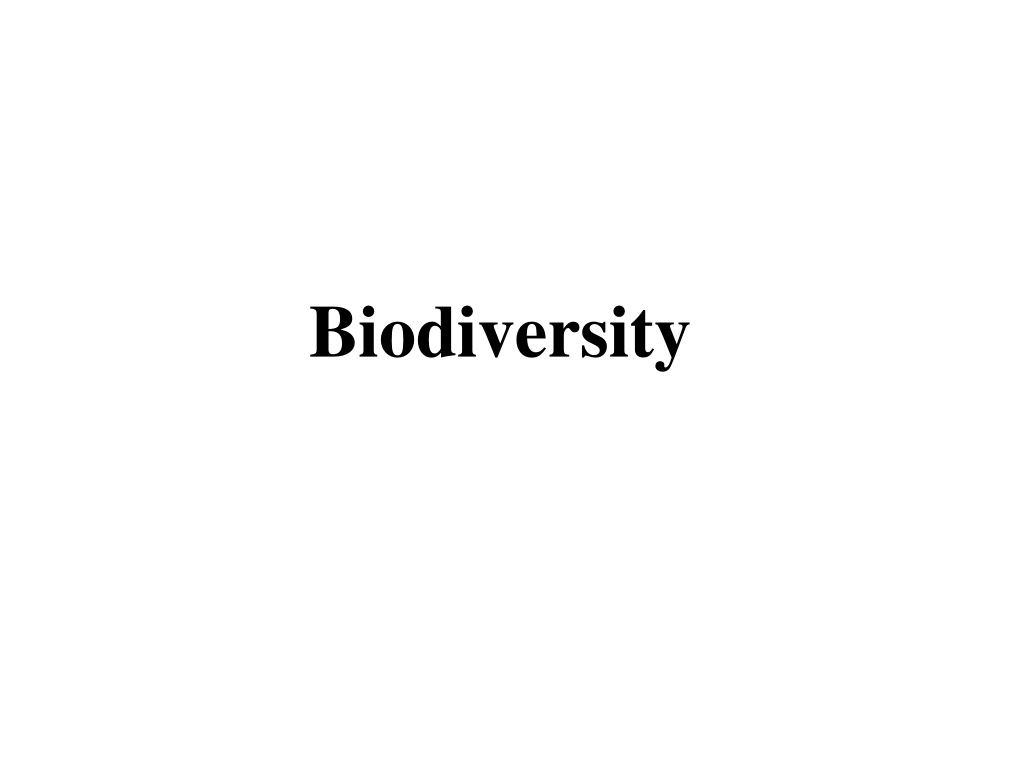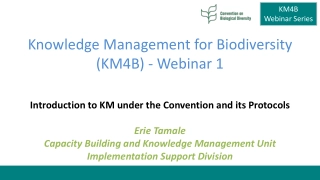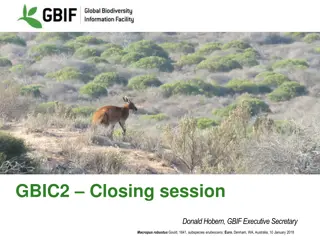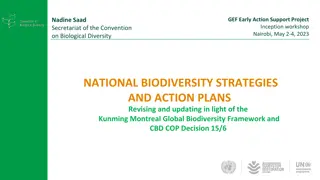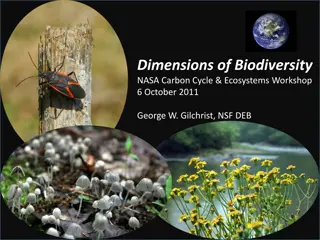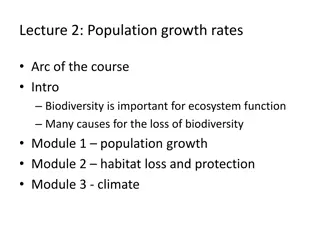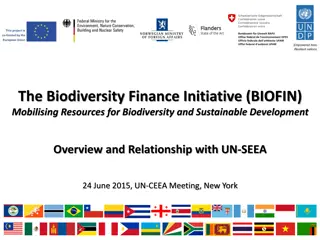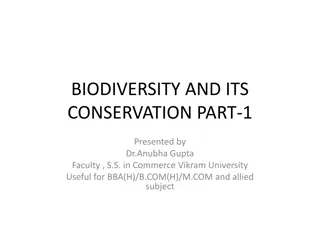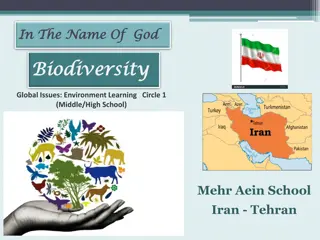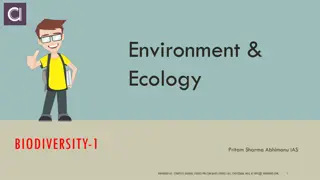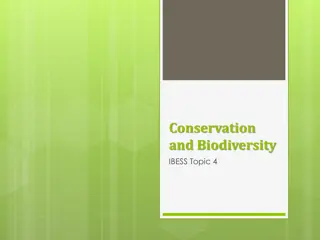Understanding Biodiversity: Importance and Implications
Biodiversity encompasses the variety of plant and animal life on Earth, including genetic, species, and ecosystem diversity. It plays a crucial role in maintaining ecological balance and ecosystem processes. Traits and interactions among species influence ecosystem function, emphasizing the significance of species richness, evenness, composition, and spatial variability. The relationship between species richness and ecosystem function is explored, highlighting the importance of niche differentiation for productivity.
Download Presentation

Please find below an Image/Link to download the presentation.
The content on the website is provided AS IS for your information and personal use only. It may not be sold, licensed, or shared on other websites without obtaining consent from the author. Download presentation by click this link. If you encounter any issues during the download, it is possible that the publisher has removed the file from their server.
E N D
Presentation Transcript
What is biodiversity? OED: biodiversity Ecol., diversity of plant and animal life, as represented by the number of extant species Ricklefs & Miller: Biodiversity includes a number of different levels of variation in the natural world: genetic, species, ecosystem Begon et al. The term may be used to describe the number of species, the amount of genetic variation or the number of community types present in an area . But most studies do focus on species diversity
Functional Consequences of Biodiversity: Numbers and Kinds of Species Organismal traits Ecosystem Processes
Traits and Ecosystem Function Traits may mediate energy and material flow directly Traits may alter abiotic conditions (limiting resources, disturbance, microclimate)
Trait Expression Is Determined By: Species richness Species evenness Species composition Species interaction Temporal and spatial variation
The Ecosystem/Ecology Divide Key ecosystem types in Arctic tundra show clear differences in key species and functional types But at the ecosystem level there are clear patterns in the landscape irrespective of species composition Bulk measures like LAI and foliar N are good descriptors of process rates
Species Richness and Ecosystem Function: Theory If niches are complementary, adding species could increase process rates linearly As niches overlap the response should saturate
Niche differentiation and productivity. a, A simple model the 'snowballs on the barn' model of niche differentiation and coexistence. The range of conditions in which each species can exist is shown with a circle, the position of which is defined by its centre. By randomly choosing locations for various numbers of circles (species), it is possible to calculate the effect of diversity on the 'coverage' of the heterogeneous habitat. The amount of such coverage is proportional to community biomass. b, Results of simulations (triangles) and of an analytical solution (solid curve) to the effects of diversity on community productivity for the snowballs on the barn model
(A) Dependence of 1996 aboveground plant biomass (that is, productivity) (mean and SE) on the number of plant speciesseeded into the 289 plots. (A) Dependence of 1996 above- ground plant biomass on the number of functional groups seeded into eachplot. Curves shown are simple asymptotic functions fitted to treatment means. More complex curves did not provide significantly better fits From: Tilman et al. (1997) Science
Problems With Richness Experiments Disentangling interactions in natural systems is difficult Measuring productivity (below ground) Scale (too short and too small) Sampling effect problem in constructed communities Sampling effect may be an important biological property or an experimental artefact if natural community assembly rules are broken
Species Interactions Mutualism Trophic interaction Predation Parasitism Herbivory Competition
Mutualism N-fixation in plant-microbe symbiosis Plant-mycorrhizal associations Both increase production and accelerate succession Decomposition is driven by highly integrated consortia of microbes
Biodiversity and Ecosystem Services Ecosystem services are defined as the processes and conditions of natural ecosystems that support human activity and sustain human life E.g., maintenance of soil fertility, climate regulation, natural pest control E.g., flows of ecosystem goods such as food, timber and freshwater
